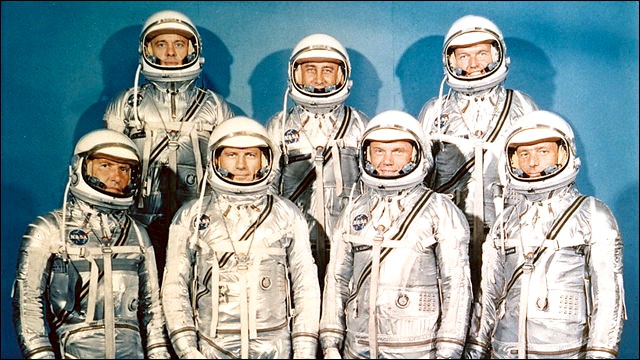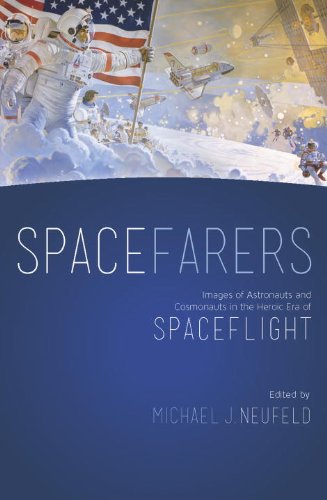
Spacefarers: Images of Astronauts and Cosmonauts in the Heroic Era of Spaceflight was released on July 9 by the Smithsonian Institution Scholarly Press as part of its “A Smithsonian Contribution to Knowledge Series.” This book, hot off the heels of many 50th anniversary milestones in the last couple of years, dissects not just human spaceflight, but how the people associated with spaceflight—astronauts, cosmonauts, and workers—were shown, and continue to be depicted, in the media and various sources of mass-marketed entertainment.
While the book was edited by Michael J. Neufeld, the Smithsonian Air and Space Museum’s Space History Museum Curator, it contains contributions by an array of scholars including Margaret A. Weitekamp, Matthew H. Hersch, James Spiller, Andrew Jenks, Guillaume de Syon, Trevor S. Rockwell, Valerie Neal, Jennifer Ross-Nazzal, and Margaret Lazarus Dean.

The book is noteworthy in that it doesn’t necessarily dissect spaceflight history, but it illuminates our reactions to it and how we perceive the men and women involved. For example, Jenks’ “The Fiftieth Jubilee: Yuri Gagarin in the Soviet and Post-Soviet Imagination” discusses the first space traveler’s public image and how it became nearly ubiquitous with spaceflight victory in that part of the world.
To this writer, the best contributions—although all were great reads—came near the end of this book. Neal’s “Bringing Spaceflight Down to Earth: Astronauts and The IMAX Experience®” details how IMAX films, ranging from The Dream Is Alive (1984) to Hubble 3D (2010), invigorated how we saw space and space travelers during the space shuttle era.
Ross-Nazzal’s “You’ve Come a Long Way, Maybe: The First Six Women Astronauts and the Media” is fascinating and an in-depth study on how the first group of NASA women—Shannon Lucid, Rhea Seddon, Anna Fisher, Sally Ride, Kathryn Sullivan, and Judith Resnik—dealt with the still occasionally sexist media. In addition, it was interesting to see how each woman had a different “public image.” It was a great look into the challenges faced by the first women of American space.
Last but not least, Lazarus Dean’s “Warriors and Worriers: Risk, Masculinity, and the Anxiety of Spaceflight in the Literature of American Spaceflight” compares and contrasts two pieces of literature, The Right Stuff (Tom Wolfe, 1979) and Challenger Park (2006), and how they show two completely diverse attitudes attached to different NASA programs. In the Mercury/Gemini era, masculinity was king and the Chuck Yeager model of exploration was desirable. However, in the shuttle era, astronauts—as they became mothers, fathers and caretakers, as well as workers—could be viewed in a more complex, emotionally nuanced light.
Spacefarers is essential reading for those fascinated with not just the men and women of spaceflight, but also how their public images are carefully—or not-so-carefully—molded by the media, books, TV, and sometimes an entire nation.
Want to keep up-to-date with all things space? Be sure to “Like” AmericaSpace on Facebook and follow us on Twitter: @AmericaSpace




Many thanks with regard to sharing the following with united states you truly realize what you will be chatting roughly! Bookmarked. Please also speak with my personal site Means). Natural meats have got a link exchange commitment involving people
Usually I really don’t read report with websites, even so need to claim that this specific write-up quite forced me to take a look in and also undertake it! Your crafting tastes continues to be stunned my family. Many thanks, rather wonderful post.